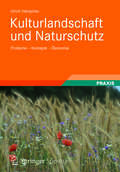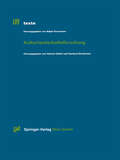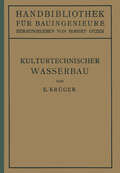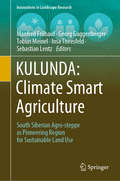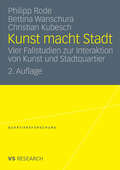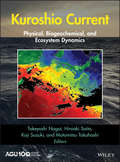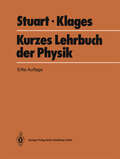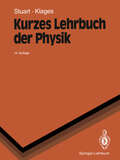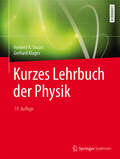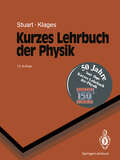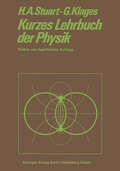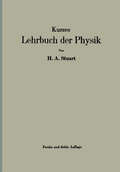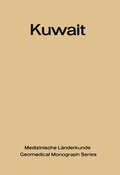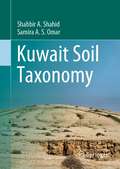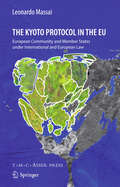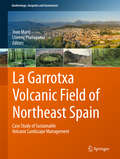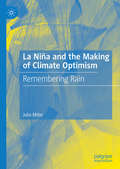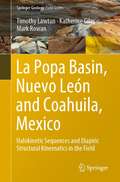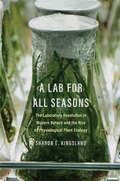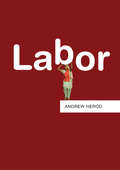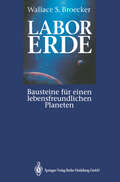- Table View
- List View
Kulturlandschaft und Naturschutz: Probleme-Konzepte-Ökonomie
by Ulrich HampickeDie Artenarmut der heutigen agrarischen Produktionslandschaft wird beklagt. Zahlreiche Maßnahmen und durchaus nennenswerte Finanzmittel werden eingesetzt, um Abhilfe zu schaffen. Der Erfolg ist begrenzt, nach der im Buch eingehend begründeten Meinung daher rührend, dass ein behördenzentriertes, etatistisches, teilweise manifest bürokratisches Denken vorherrscht. Alle ökonomischen Anreize wirken für die Produktionsmaximierung und gegen den Naturschutz. Naturschutz würde wie jedes andere Gewerbe betrieben werden, wenn er ökonomisch attraktiv wäre. Basierend auf gesicherten Kenntnissen der ökonomischen Theorie der Kollektivgüter wird für eine Naturschutzpolitik geworben, die Anreize schafft und das Interesse der Landnutzer weckt. Das Buch erschöpft sich nicht in einem Pamphlet für eine Idee, sondern geht auf der Basis langjähriger Beschäftigung auf alle wesentlichen naturschutzfachlichen und betriebswirtschaftlichen Teilfragen in der Landschaft ein.
Kulturlandschaftsforschung (iff-Texte #5)
Das Schwerpunktheft "Kulturlandschaftsforschung" der iff-Texte stellt zwei komplementäre Ansätze der Kulturlandschaftsforschung dar: Einerseits geht es um die Wahrnehmung und gesellschaftliche Konstruktion von Landschaften sowie deren politische Instrumentierbarkeit, andererseits werden materielle Wechselwirkungen zwischen Gesellschaft und Landschaft und deren Rolle für die Landschaftsgenese analysiert. Das Buch umfaßt ausgewählte Ergebnisse, die in den Abteilungen "Raum und Ökonomie" und "Soziale Ökologie" im Rahmen des BMWV-Forschungsschwerpunktes Kulturlandschaftsforschung erarbeitet wurden. Es bietet einen breiten interdisziplinären Zugang zum Thema: die AutorInnen kommen aus den Fachbereichen Politikwissenschaften, Soziologie, Landschaftsplanung, Biologie, Ökologie, Geschichte, Mathematik, Pädagogik usw.; auch die dargestellten Ergebnisse wurden in interdisziplinären Projekten erarbeitet.
Kulturtechnischer Wasserbau: III.Teil Wasserbau 7.Band (Handbibliothek für Bauingenieure #7)
by E. KrügerDieser Buchtitel ist Teil des Digitalisierungsprojekts Springer Book Archives mit Publikationen, die seit den Anfängen des Verlags von 1842 erschienen sind. Der Verlag stellt mit diesem Archiv Quellen für die historische wie auch die disziplingeschichtliche Forschung zur Verfügung, die jeweils im historischen Kontext betrachtet werden müssen. Dieser Titel erschien in der Zeit vor 1945 und wird daher in seiner zeittypischen politisch-ideologischen Ausrichtung vom Verlag nicht beworben.
KULUNDA: South Siberian Agro-steppe as Pioneering Region for Sustainable Land Use (Innovations in Landscape Research)
by Manfred Frühauf Georg Guggenberger Tobias Meinel Insa Theesfeld Sebastian LentzThis book focuses on a representative example and one of the world’s largest steppe conversions, and provides a detailed overview of the results of the BMBF-funded research project KULUNDA. As part of the Siberian virgin land policy, the Kulunda steppe was transformed into agricultural land from 1954 to 1965. In the course of the project, a multidisciplinary research team conducted a natural, social-economic and agro-scientific cause-and-effect analysis of (agro-)ecosystem destabilisation, as well as various field trials covering tillage and crop rotation options in their socio-economic context. The ecologically and economically sound findings offer strategies for combining climate smart land utilization, ecosystem restoration and sustainable regional development, and can readily be applied to other virgin land conversion efforts. In addition, the findings on the Eurasian steppes will expand the current conversion literature, which mainly consists of the ‘Dust Bowl’ literature of the North American plains. Given its scope, the book will appeal to scientists, professionals, and students in the environmental, geo- and climate sciences.
Kunst macht Stadt: Vier Fallstudien zur Interaktion von Kunst und Stadtquartier (Quartiersforschung)
by Philipp Rode Bettina Wanschura Christian KubeschKuroshio Current: Physical, Biogeochemical, and Ecosystem Dynamics (Geophysical Monograph Series #242)
by Takeyoshi Nagai Hiroaki Saito Koji Suzuki Motomitsu TakahashiAn interdisciplinary study of the Kuroshio nutrient stream The surface water of the Kuroshio, a western boundary current in the North Pacific Ocean, is nutrient-depleted and has relatively low primary productivity, yet abundant fish populations are supported in the region. This is called the “Kuroshio Paradox”. Kuroshio Current: Physical, Biogeochemical and Ecosystem Dynamics presents research from a multidisciplinary team that conducted observational and modeling studies to investigate this contradiction. This timely and important contribution to the ocean sciences literature provides a comprehensive analysis of the Kuroshio. Volume highlights include: New insights into the role of the Kuroshio as a nutrient stream The first interdisciplinary examination of the Kuroshio Paradox Reflections on the influence of the Kuroshio on Japanese culture Research results on both the lower and higher trophic levels in the Kuroshio ecosystem Comparisons of nutrient dynamics in the Kuroshio and Gulf Stream Predictions of ecosystem responses to future climate variability
Kuroshio Current: Physical, Biogeochemical, and Ecosystem Dynamics (Geophysical Monograph Series #242)
by Takeyoshi Nagai Hiroaki Saito Koji Suzuki Motomitsu TakahashiAn interdisciplinary study of the Kuroshio nutrient stream The surface water of the Kuroshio, a western boundary current in the North Pacific Ocean, is nutrient-depleted and has relatively low primary productivity, yet abundant fish populations are supported in the region. This is called the “Kuroshio Paradox”. Kuroshio Current: Physical, Biogeochemical and Ecosystem Dynamics presents research from a multidisciplinary team that conducted observational and modeling studies to investigate this contradiction. This timely and important contribution to the ocean sciences literature provides a comprehensive analysis of the Kuroshio. Volume highlights include: New insights into the role of the Kuroshio as a nutrient stream The first interdisciplinary examination of the Kuroshio Paradox Reflections on the influence of the Kuroshio on Japanese culture Research results on both the lower and higher trophic levels in the Kuroshio ecosystem Comparisons of nutrient dynamics in the Kuroshio and Gulf Stream Predictions of ecosystem responses to future climate variability
Kurzes Lehrbuch der Physik
by H.A. Stuart Gerhard KlagesDieses Lehrbuch will, von Beobachtungen und physikalischen Meßergebnissen ausgehend, das Verständnis der physikalischen Grundgesetze anschaulich vermitteln. Daran schließt sich ihre qualitative Anwendung bei Rechnungen zu gestellten Übungsaufgaben an. Der Stoff der ganzen Physik wird geschlossen in dem Rahmen behandelt, wie ihn die anderen Naturwissenschaften, Technik und Medizin als Grundlage benötigen. Die Gegenstandskataloge für die ärztliche Vorprüfung und den ersten Abschnitt der pharmazeutischen Prüfung wurden berücksichtigt. Vertiefende Ergänzungen findet man im Kleindruck, ebenso Anwendungen der Medizin und Technik. Das "Kurze Lehrbuch der Physik" eignet sich somit zum Lernen für Studierende der angesprochenen Fachrichtungen und zum späteren Gebrauch beim Nachlesen von auftretenden speziellen physikalischen Fragen, Fakten und Daten. Aus den Besprechungen: " Das vorliegende Buch beschreibt in scharf und einprägend geplanten Skizzen die Elemente der Physik. Die kurzen Beschreibungen erlauben es den Autoren ein weites Spektrum von Disziplinen zusammenzufassen: von der Mechanik der Massenpunkte, der Planetenbewegung, über den molekularen Aufbau der Materie zu dem Phänomen der Schwingung und der Wellenausbreitung, der Elektrizität und Optik bis zu den kleinsten Dimensionen der Welt, der Atomkerne und Elementarteilchen. Als Stütze stichwortartigen Charakters kann das Buch dem Anfänger wie dem Fortgeschrittenen, dem Studenten wie dem allgemein Interessierten sehr nützlich sein." Zeitschrift für angewandte Mathematik u.Physik #1
Kurzes Lehrbuch der Physik (Springer-Lehrbuch)
by Herbert A. Stuart Gerhard KlagesEndlich werden im Stuart/Klages auch ausführliche Lösungen zu den über 200 Aufgaben bereitgestellt. Zudem wurde der gesamte Text überarbeitet und, wo nötig, ergänzt. Auch das Sachverzeichnis wurde wesentlich erweitert. Damit wird einem Wunsch der Leser entsprochen, um das Buch für Studenten mit Nebenfach Physik noch attraktiver zu machen. Dadurch wird das Buch zu einem echten Studienbegleiter.
Kurzes Lehrbuch der Physik (Springer-Lehrbuch)
by Herbert A. Stuart Gerhard KlagesSeit mehr als 60 Jahren hat sich der „Stuart/Klages" als Lehrbuch bewährt. Das Erfolgskonzept der Autoren gilt auch für die 19. Auflage: Umfassend, klar und verständlich führen sie in die klassische Physik ein und vermitteln dabei auf anschauliche Art und Weise ein Verständnis für die physikalischen Zusammenhänge. Der Band enthält über 200 Aufgaben mit ausführlichen Lösungen und wurde für die aktuelle Auflage aktualisiert. Das Lehrbuch richtet sich insbesondere an Studierende im Nebenfach Physik.
Kurzes Lehrbuch der Physik (Springer-Lehrbuch)
by Herbert A. Stuart Gerhard KlagesDieses Lehrbuch behandelt den Stoff der gesamten Physik in einem Rahmen, wie er von den anderen Naturwissenschaften, der Technik, Pharmazie und Medizin als Grundlage benötigt wird. Die Autoren gehen dabei von physikalischen Beobachtungen und Meßergebnissen aus und vermitteln anschaulich das Verständnis der physikalischen Zusammenhänge. An der Anwendung orientierte Aufgaben mit Lösungen runden das Lehrbuch ab. Die 13., verbesserte Auflage dieses bewährten Lehrbuchs eignet sich bestens zum begleitenden Studium und Selbststudium. Die Gegenstandskataloge für die ärztliche Vorprüfung sowie für den ersten Abschnitt der pharmazeutischen Prüfung werden berücksichtigt. Im Kleindruck finden sich vertiefende Ergänzungen. Auch interessierten Schülern der Grund- und Leistungskurse Physik kann dieses Kurze Lehrbuch der Physik uneingeschränkt empfohlen werden.
Kurzes Lehrbuch der Physik
by Herbert Arthur Stuart Gerhard Klages§ 1. Abgrenzung und Aufgaben der Physik. Das Wort Physik bedeutete ursprüng lich Lehre von der Natur. In diesem allgemeinen Sinne ist also die gesamte Natur, soweit sie beobachtbar, d. h. unseren Sinnen und Meßgeräten zugänglich ist, Gegenstand der Physik. Einzelne Zweige der Physik als der allgemeinen Natur lehre haben sich im Laufe der Zeit zu besonderen selbständigen Wissenschaften ent · wickelt, so die sich mit der belebten Natur befassenden Wissengebiete, wie die Biologie, dann die Astronomie, welche die physikalischen Vorgänge im Kosmos untersucht, und die Chemie, welche die stoffiichen Veränderungen der Körper, d. h. die Reaktionen der Atome und Moleküle betrachtet und daher auch als die "Physik 1 der Atomgruppierungen" bezeichnet werden kann . Sondern wir diese verschiedenen Teilgebiete aus, so bleibt für die Physik im heutigen, engeren Sinne als Aufgabe, die Grundgesetze der unbelebten Welt sowie die hier wirksamen Kräfte und Energiebeziehungen aufzudecken. Es ist dann Sache der anderen Wissenschaften, wie der Biologie, Medizin, Chemie und ins besondere auch der Technik, sich die Erkenntnisse der Physik zunutze zu machen. Die zielbewußte praktische Anwendung physikalischer Erkenntnisse im großen hat unter anderem die moderne Technik hervorgebracht. Jede neue physikalische Entdeckung führt früher oder später zu neuen technischen Möglichkeiten. Als Beispiel nennen wir nur die Entwicklung von der durch FARADAY entdeckten elektromagnetischen Induktion bis zur heutigen Wechselstromtechnik. So ist die Physik als Quelle neuer Entwicklungen und prinzipiellen Fortschritts die Grund wissenschaft für alle Naturwissenschaften einschließlich der Technik. Man kann ohne Übertreibung sagen: Die Physik von heute bestimmt die Technik von morgen.
Kuwait: Urban and Medical Ecology. A Geomedical Study (Medizinische Länderkunde Geomedical Monograph Series #4)
by Geoffrey E. French Alan G. HillKuwait Soil Taxonomy
by Shabbir A. Shahid Samira A. OmarThis book provides guidelines to key soil taxa in the deserts of Kuwait and guidance to associated procedures for laboratory analyses of soils, leading to land use planning on informed decisions. Soils are essential to provide food, feed, and fiber in addition to multiple ecosystem services that sustain life on earth. To achieve the above services sustainably, it is essential to use soils rationally based on their potential for specific uses. This requires establishing national soil classification systems to assess soils locally and to provide guidance to other countries where similar soils may be occurring. Once soil classification is established, it becomes easier to adopt technologies established on similar soils and environmental conditions without conducting long-term and expensive experimental trial. The taxa are established based on soil’s morphological, physical, chemical, and mineralogical properties and climatic factors. It offers opportunities to maintain future soil surveys and their correlation to the soils of Kuwait. The book is useful in other arid region countries where similar soil and environmental conditions are existing, such as Bahrain, Oman, Qatar, and Saudi Arabia. The book also has international relevance, as it was prepared by extracting definitions from USDA-NRCS keys to soil taxonomy, and sections related to soils of Kuwait are added in the book. The book is a unique and excellent addition to the international soil literature.
The Kyoto Protocol in the EU: European Community and Member States under International and European Law
by Leonardo MassaiThe participation of the European Community and the Member States in the international climate change regimes is a complex issue. In the case of the Kyoto Protocol, this is rendered more complicated by the fact that for the purposes of Article 4 of the Kyoto Protocol, the membership of the European Community and Member States is frozen at a particular point in time. The result of this is that under International Law the European Community and a part of the Member States (EU15) have agreed to jointly fulfil some of those obligations whereas under Community Law all Member States share a certain degree of responsibility to meet the obligations created by the Kyoto Protocol. This book analyses in great detail the Kyoto Protocol and its obligations, as well as the discrepancies between International Law and Community Law in that regard. The book is a useful tool for academics, practitioners, consultants and all stakeholders operating in the field of environmental law and climate change. Leonardo Massai is a legal expert and lecturer in International and EU Environmental Law and Climate Change.
La Garrotxa Volcanic Field of Northeast Spain: Case Study of Sustainable Volcanic Landscape Management (Geoheritage, Geoparks and Geotourism)
by Joan Martí Llorenç PlanagumàThis informative book takes readers on an enjoyable journey through the La Garrotxa volcanoes. In addition to a general description of the main geological and volcano logical values of the region, it also provides a detailed account of the history of the region, its biological diversity, and its cultural heritage including architecture, folklore and gastronomy. La Garrotxa Volcanic Zone was declared a Natural Park in 1982 to protect the numerous sites of special interest that are found in this region. The Natural Park has been pioneering in many initiatives aimed at preserving the landscape and natural values and promoting awareness of the area within the community. An important part of this book is dedicated to the insights into the educational programs and outreach developed to disseminate the main values of this region. It shows how sustainable tourism has been implemented and the management plan that has been designed to preserve such important natural and cultural values. Including local experts’ views on the topics covered, this book will appeal to a general audience interested not only in visiting the area but also in gaining insights into an example of geoheritage and geoconservation that has successfully integrated of education, tourism, planning and environmental management.
La Niña and the Making of Climate Optimism: Remembering Rain
by Julia MillerThis book examines the deep connection Australians have with their climate to understand contemporary views on human-induced climate change. It is the first study of the Australian relationship with La Niña and it explains how fundamental this relationship is to the climate change debate both locally and globally. While unease with the Australian environment was a hallmark of early settler relations with a new continent, this book argues that the climate itself quickly became a source of hope and linked to progress. Once observed, weather patterns coalesced into recognizable cycles of wet and dry years and Australians adopted a belief in the certainty of good seasons. It was this optimistic response to climate linked to La Niña that laid the groundwork for this relationship with the Australian environment. This book will appeal to scholars and students of the environmental humanities, history and science as well as anyone concerned about climate change.
La Popa Basin, Nuevo León and Coahuila, Mexico: Halokinetic Sequences and Diapiric Structural Kinematics in the Field (Springer Geology)
by Timothy Lawton Katherine Giles Mark RowanThis book describes the two excursions accessed from the Monterrey International Airport on the north side of Monterrey, Nuevo León, Mexico. Excellent exposures of salt diapirs and flanking strata in La Popa basin, northeastern Mexico, contain world-class examples of salt–sediment interaction that provided the basis for the concept of halokinetic sequences. The basin also contains one of the first secondary salt welds described in outcrop. Two one-day excursions described here provide an easily accessible overview of salt–sediment relations within a short distance of Monterrey, Nuevo León, Mexico. Excursion 1 constitutes an introduction to basin stratigraphy, an introduction to halokinetic sequences at El Papalote diapir, and a visit to a salt-cored detachment fold near Hidalgo, Nuevo León. Excursion 2 is a visit to La Popa salt weld, where stops at several parts of the weld permit comparison of different structural styles developed along the weld. Each excursion begins and ends at the Marriott Courtyard Aeropuerto Hotel, near the Monterrey airport.
A Lab for All Seasons: The Laboratory Revolution in Modern Botany and the Rise of Physiological Plant Ecology
by Sharon E. KingslandThe first book to chronicle how innovation in laboratory designs for botanical research energized the emergence of physiological plant ecology as a vibrant subdiscipline Laboratory innovation since the mid-twentieth century has powered advances in the study of plant adaptation, evolution, and ecosystem function. The phytotron, an integrated complex of controlled-environment greenhouse and laboratory spaces, invented by Frits W. Went in the 1950s, set off a worldwide laboratory movement and transformed the plant sciences. Sharon Kingsland explores this revolution through a comparative study of work in the United States, France, Australia, Israel, the USSR, and Hungary. These advances in botanical research energized physiological plant ecology. Case studies explore the development of phytotron spinoffs such as mobile laboratories, rhizotrons, and ecotrons. Scientific problems include the significance of plant emissions of volatile organic compounds, symbiosis between plants and soil fungi, and the discovery of new pathways for photosynthesis as an adaptation to hot, dry climates. The advancement of knowledge through synthesis is a running theme: linking disciplines, combining laboratory and field research, and moving across ecological scales from leaf to ecosystem. The book also charts the history of modern scientific responses to the emerging crisis of food insecurity in the era of global warming.
Labelled diagram showing how the birth and death rates in a country affect its total population (large print)
by RnibThis is a labelled diagram showing how the birth and death rates in a country affect its total population. There is a locator dot shown, which will be at the top left of the page when the image is the correct way up. The page is divided by vertical lines into five areas showing the stages in population transition. The areas are titled at the top of the page and have a short explanation of the stage at the bottom of the page. There are three data lines going from left to right on the diagram that curve up and down the page. There is a heavy, widely-spaced dashed line, representing total population, starting on the centre left of the page and curving up then down to the centre right. The birth rate line is a heavy, closely-spaced dashed line that starts in the top right of the image curves up and down the page many times to the centre right. The death rate line is a heavy, solid line that starts in the top right of the image curves up and down the page many times to the centre right.
Labelled diagram showing how the birth and death rates in a country affect its total population (UEB contracted)
by RnibThis is a labelled diagram showing how the birth and death rates in a country affect its total population. There is a locator dot shown, which will be at the top left of the page when the image is the correct way up. The page is divided by vertical lines into five areas showing the stages in population transition. The areas are titled at the top of the page and have a short explanation of the stage at the bottom of the page. There are three data lines going from left to right on the diagram that curve up and down the page. There is a heavy, widely-spaced dashed line, representing total population, starting on the centre left of the page and curving up then down to the centre right. The birth rate line is a heavy, closely-spaced dashed line that starts in the top right of the image curves up and down the page many times to the centre right. The death rate line is a heavy, solid line that starts in the top right of the image curves up and down the page many times to the centre right.
Labelled diagram showing how the birth and death rates in a country affect its total population (UEB uncontracted)
by RnibThis is a labelled diagram showing how the birth and death rates in a country affect its total population. There is a locator dot shown, which will be at the top left of the page when the image is the correct way up. The page is divided by vertical lines into five areas showing the stages in population transition. The areas are titled at the top of the page and have a short explanation of the stage at the bottom of the page. There are three data lines going from left to right on the diagram that curve up and down the page. There is a heavy, widely-spaced dashed line, representing total population, starting on the centre left of the page and curving up then down to the centre right. The birth rate line is a heavy, closely-spaced dashed line that starts in the top right of the image curves up and down the page many times to the centre right. The death rate line is a heavy, solid line that starts in the top right of the image curves up and down the page many times to the centre right.
Labor: Workers And The Landscapes Of Capitalism
by Andrew HerodLabor is the source of all wealth. Without workers, the world's natural resources cannot be transformed into finished goods and services cannot be delivered. Labor, though, is a uniquely important resource because, unlike others, it is capable of altering its own conditions of existence and of challenging how it is used. In this book, Andrew Herod offers an original and wide-ranging analysis of labor as a multifaceted and truly global resource. Opening with a rich overview of the migration streams and demographic trends that have shaped the planetary distribution of labor, he goes on to explore how globalization and the growth of precarious work are impacting working people's lives in both "Old Economy" and "New Economy" employment sectors. He concludes by surveying some of the ways in which working people are taking action to improve their lives, including forming trade unions and other labor organizations, occupying factories in places like Argentina and Greece, and establishing anti-sweatshop campaigns. This book is a must-read for anyone interested in understanding the state of labor in today's global economy.
Labor Erde: Bausteine für einen lebensfreundlichen Planeten
by Wallace S. BroeckerLabor Erde ist eine brillante Einführung in das Studium des Planeten Erde, von den kosmischen Ursprüngen ihrer Elemente bis hin zu der Beeinflussung der Atmosphäre durch die Menschheit und den klimatischen Änderungen, die uns bevorstehen. Das Buch ist ebenso eine Beschreibung der Prozesse, die zur Entwicklung der Erde beigetragen haben, wie eine Darstellung der Art, in der Wissenschaftler denken und Probleme lösen. Der Autor ist Professor an der Columbia University in New York und Mitglied der National Academy of Sciences. Er forscht dort seit 1953 und hat mehr als 200 wissenschaftliche Artikel verfaßt. Broecker gilt als "Grandmaster of Global Thinking", der so unterschiedliche Dinge wie Geochemie, Ozeanographie und Paleoklimatologie miteinander verbindet und zu einem großen Gemälde vereinigt.
